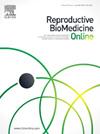IS PROGESTERONE SUPPLEMENTATION REQUIRED FOR LUTEAL PHASE SUPPORT DURING MODIFIED NATURAL CYCLE FROZEN EMBRYO TRANSFER?
IF 3.7
2区 医学
Q1 OBSTETRICS & GYNECOLOGY
引用次数: 0
Abstract
Objective
Is there a difference in pregnancy outcomes among women undergoing modified natural cycle frozen embryo transfer (mNC-FET) with or without progesterone as luteal phase support (LPS)?
Materials and Methods
A retrospective analysis was conducted on 2216 modified natural cycle frozen embryo transfer (mNC-FET) cycles performed at Memorial Sisli Hospital between 2011 and 2023. The study included patients under 38 years of age who underwent top-quality (TQ) or good-quality (GQ) single embryo transfer in mNC-FET cycles. Excluded from the study were medium-quality (MQ) or poor-quality (PQ) embryo transfer cycles, double embryo transfer cycles, and embryo transfer cycles with preimplantation genetic testing for aneuploidy (PGD/A). During the mNC-FET cycles, patients were monitored using transvaginal ultrasonography starting from the second day of the menstrual cycle to determine the day of ovulation. Based on follicle size and hormone levels, ovulation was induced with a single subcutaneous dose of recombinant human chorionic gonadotropin (r-hCG, Ovitrelle 250 µg). The cycles were divided into three separate groups for analysis: Group A (n=493) did not receive any luteal phase support; Group B (n=1327) received 200 mg of vaginal micronized progesterone twice daily; and Group C (n=396) received 200 mg of vaginal micronized progesterone twice daily along with 25 mg of subcutaneous progestin daily. Groups were compared in terms of cycle characteristics and pregnancy outcomes.
Results
Demographic and fresh cycle characteristics of the groups were similar. There was no statistically significant difference between the groups regarding pregnancy outcomes. Live birth rates were 58.4% in Group A, 60.8% in Group B and 60.1% in Group C (p=0.650). Clinical pregnancy rates were 65.9%, 69.1% and 68.2%, respectively (p=0.432). Biochemical abortion rates were 4.5%, 6.6% and 5.3%, respectively (p=0.186) and clinical abortion rates were 6.3%, 6.7% and 5.3%, respectively (p=0.828).
Conclusion
The study showed that women under 38 years of age undergoing mNC FET had similar pregnancy outcomes with or without the use of progesterone for luteal phase support. Consequently, the administration of progesterone for luteal phase support seems unnecessary. In these cases, hCG given for triggering and the presence of corpus luteum are sufficient for luteal phase support. Randomised controlled trials are needed to support these findings.
求助全文
约1分钟内获得全文
求助全文
来源期刊

Reproductive biomedicine online
医学-妇产科学
CiteScore
7.20
自引率
7.50%
发文量
391
审稿时长
50 days
期刊介绍:
Reproductive BioMedicine Online covers the formation, growth and differentiation of the human embryo. It is intended to bring to public attention new research on biological and clinical research on human reproduction and the human embryo including relevant studies on animals. It is published by a group of scientists and clinicians working in these fields of study. Its audience comprises researchers, clinicians, practitioners, academics and patients.
Context:
The period of human embryonic growth covered is between the formation of the primordial germ cells in the fetus until mid-pregnancy. High quality research on lower animals is included if it helps to clarify the human situation. Studies progressing to birth and later are published if they have a direct bearing on events in the earlier stages of pregnancy.
 求助内容:
求助内容: 应助结果提醒方式:
应助结果提醒方式:


